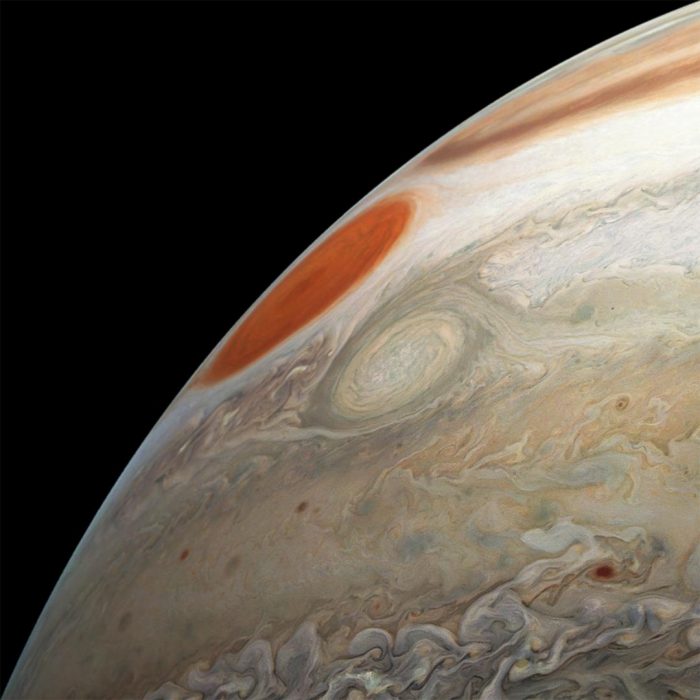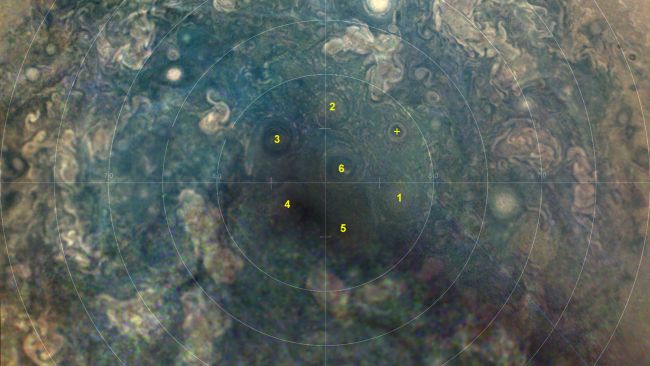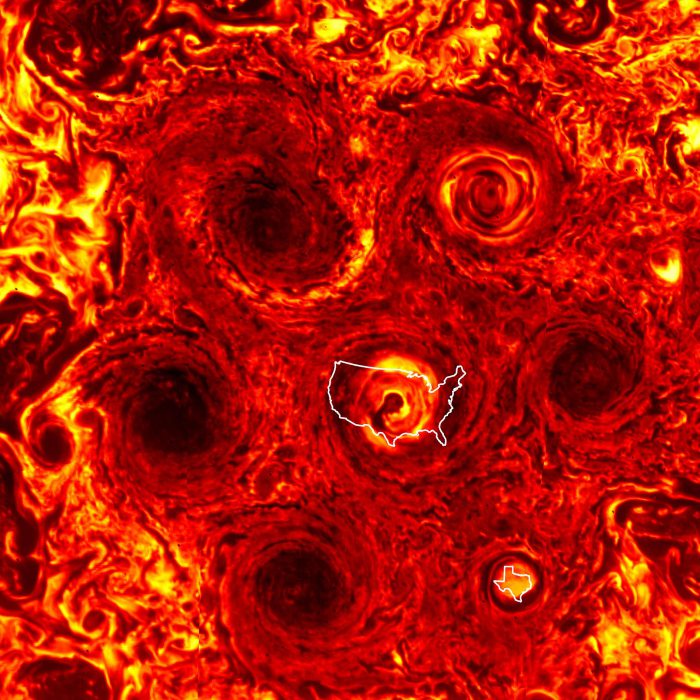For a few years now, NASA's Juno probe has been orbiting our solar system's largest planet, Jupiter, as well as flying past its many moons. The insight that it has provided us has been incredible, giving us exceptional, vivid views of this massive body and its endlessly swirling storms.
Occasionally, Juno even spots the arrival of a brand new storm. Let's have a peek!
Storm watchers

The Great Red Spot is a super-cyclone that is many hundreds, even thousands, of years old. Three Earths could fit inside of it. (Enhanced Image by Gerald Eichstädt and Sean Doran (CC BY-NC-SA) based on images provided Courtesy of NASA/JPL-Caltech/SwRI/MSSS)
You might rightly ask what is the big deal about a storm forming? Storms come and go all the time on Earth. That's weather right? Well, yes and no.
For one, even the smaller storms on Jupiter are enormous. And two, while the atmosphere is in constant motion and full of winds between 300 to 600 km/h and higher (180 to 370 mph), once a Jupiter storm gets going, it tends not to stop. The best example of this is the Great Red Spot, which has been raging for centuries and shows no sign of stopping.
So in this light, you can see how a new storm is a big deal. It's less a passing phase than a new 'landmark' of sorts on the planet's surface.
Peculiar poles

A truer colour image of Jupiter's South Pole with the cyclones marked. The new cyclone has an 'X'. (NASA/JPL-Caltech/SwRI/MSSS)
The storm in question was found on the South Pole. For years, a grouping of five cyclones around a sixth one was found there. The five cyclones formed a sort of pentagon. But over the past few months, regular infrared pictures taken by the JIRAM camera on Juno have shown a sixth Jupiter cyclone forming on the perimeter, turning the pentagon into a hexagon.
Given the 'delicious' shots that Juno has also given us of Jupiter's North Pole, it seems clear that there's a lot going on at this planet's peculiar poles.
For a full two years' worth of South Pole images by Juno, play the video below. You can watch the new storm grow in the bottom right of your screen. Cool!
 This infrared image taken by the Jovian Infrared Auroral Mapper (JIRAM) shows the sizes of the cyclones at Jupiter's South Pole as compared to the United States and the state of Texas. (NASA/JPL-Caltech/SwRI/ASI/INAF/JIRAM)
This infrared image taken by the Jovian Infrared Auroral Mapper (JIRAM) shows the sizes of the cyclones at Jupiter's South Pole as compared to the United States and the state of Texas. (NASA/JPL-Caltech/SwRI/ASI/INAF/JIRAM)









